Planting tuberous begonia in the garden, care and reproduction
Tuberous begonia, which is planted in open ground in spring, is very popular among gardeners. This hybrid plant, obtained by crossing more than 9 different species, can be ampelous, herbaceous or grow as a bush. They are often decorated with terraces, balconies and flower beds, it grows well in a pot, like indoor. But caring for this flower requires adherence to many subtleties.
How to choose the right begonia tuber?
It is best to purchase begonias not in large supermarkets, but in specialized departments and garden centers. Since the end of February, tubers from Holland appear on sale, ready for planting. Usually they are packed in special bags filled with peat or sawdust, but they are often sold in bulk in small shops. You need to choose very carefully and focus not on the colorful picture, but on the planting material itself. You should not wait for a drop in prices when only a low-quality product remains, which is unlikely to sprout.
The tuber should not be soft, overdried, covered with mold or bloom. It is often difficult to see signs of decay. Sometimes there are 2-3 plants in a package, which can vary greatly in quality. You can touch several packages to find the largest, densest specimens. It's good if they have awake kidneys.
Advice! It is important to pack the begonias well, for example, wrap them in several newspapers. If you just put them in a bag and take them outside, these delicate plants will freeze and most likely die.
There are four types of tuberous begonia:
- large-flowered,
- small-flowered,
- mid-flowered,
- ampelous.
Their tuber size is different. The color of flowers can be very different, the inflorescences have a double and non-double form, with a corrugated or jagged edge. Some are similar to peonies, daffodils, roses and camellias.
Several popular varieties:
- The golden ball is a tall bush with large yellow flowers,
- Kelblutrot - large-flowered begonia with red inflorescences,
- Marmorata is one of the most common varieties, with huge white double flowers, a pink stripe along the edge of the petal,
- Pikoti - terry large-flowered begonias, colors: pink, white or yellow with a pink border,
- Chanson is an ampelous perennial with small double flowers.
Tuber processing
Usually begonias are acquired before the land on the site has warmed up enough for planting in open ground. Such planting material can be removed in a cool room or stored in the refrigerator (vegetable compartment) until March, if the buds have not yet started to grow. No care is required. But, if the tuber has already awakened, you should not wait for warming and leave it in the bag. In order for the plant to grow its root mass, it is placed in a pot. It is necessary to plant in loose soil, fertile enough, into which it is desirable to add vermiculite.
You can purchase a ready-made substrate or prepare the mixture yourself by mixing two parts of leafy soil with one part of humus, peat and sand. There is no need to compact the soil. But before planting begonia, the tubers must be processed. First of all, you should remove dry roots. Then the planting material is etched in a special fungicide, which is diluted in warm water according to the instructions. In a previously prepared container with the drug, the tuber is lowered by about two-thirds - so that liquid does not get on the top, otherwise it can rot.Keep begonia in solution for 20-40 minutes.
How to plant a tuber in a pot?
The container for planting tubers should not be deep, since the root system of this plant is shallow. You can sprout several begonias at once in one box, if you place them at a distance of 10 cm from each other to facilitate care, but then the grown plants still have to be planted. For one - it is better to choose a wide, but low pot. The distance from the wall to the tuber should be at least 5 cm.
These flowers respond very well to long-term fertilization and can be added to the soil immediately. For begonias, drainage is required - expanded clay, broken brick or clay shards. You need to plant the tuber with the convex part down, roots form on it. Begonia buds are on the concave side. When planting, it does not deepen, since when moisture enters the recess, the plant can rot. Watered gently along the edge of the pot.
Some growers recommend covering the tuber with a bottle or jar to create greenhouse conditions. But you do not need to do this, otherwise begonia, being in the open field, may not adapt. The pot should be immediately placed on a bright window, but not in direct sunlight, where the temperature is not lower than +16 ° C. Planting maintenance consists of regular, moderate watering, protection from drafts and providing fresh air.
Landing in open ground
The plant must be gradually accustomed to the conditions of the street, brought out to a warm balcony or terrace, gradually increasing the interval. Some gardeners plant tubers directly into the ground in early March, covering them with several layers of special material. But this method of germination is only suitable for those who have the opportunity to constantly monitor the garden. You can plant tubers in open ground when the threat of frost has passed.
Growing begonias in the garden begins with finding a sheltered, bright place to plant from the wind, but not under the scorching sun. These plants can withstand shading; direct sunlight can cause burns on the leaves. If several bushes are planted, the distance between them depends on the size: large specimens are planted 30 cm from each other, medium - 20, small - 15. The soil should be very loose, breathable. At the bottom of the planting pit, you can put humus and ash, with the same composition to mulch the soil after planting.
Further care for tuberous begonia consists in abundant watering, but without stagnant moisture. Better to do it in the morning. The shoots of plants are very brittle, so you need to handle them carefully. During the growth period, they can be tied to a support. Abundant flowering lasts from late May to mid-October, it is usually abundant - flowers are large, bright, of various shapes and colors. Terry begonia is especially attractive; it looks like a living bouquet.
Caring for begonias both in the ground and in a pot, includes the removal of wilted flowers. In these plants, they are bisexual - the male ones are usually nondescript, they can also be removed if you do not plan to collect seeds. It is not necessary to spray the bushes, as this can cause sunburn. You can feed them with mineral fertilizers, 2-3 times during the entire growing season.
Dormant period of tuberous begonia
By the beginning of autumn, tuberous begonias are prepared for a dormant period, gradually reducing watering and stopping feeding. During this time, mature plants can be propagated by cuttings. When the plants get ready for winter, their aerial parts begin to die off. Watering should be stopped when all the leaves fall off. Then the top is cut off, and after 2 weeks the tubers are cleaned of soil and placed in peat or sphagnum. Sphagnum moss has bactericidal properties and protects begonias from decay. For storage, choose a place where the temperature does not exceed 8 ° C, for example, a vegetable compartment in the refrigerator. Subsequent care consists in regular inspection of tubers, rotten ones are removed.
Young, seed-grown plants often remain green. In the fall, before frost, such begonias are dug up together with a lump of earth, sorted by size, placed in boxes 15 cm high and sprinkled with substrate. They are placed in a bright, cool place (about + 15 ° C), care during this period consists in limited watering, preventing the earthen coma from drying out. In the spring, when the bushes resume growth, they are placed back in pots before being transplanted into open ground.
Reproduction of tuberous begonia
Tuberous begonias can be propagated vegetatively (by dividing the tuber), by seeds and cuttings. The first method is especially popular and is often used to rejuvenate plants. For him, large tubers are chosen, 2-3 years old with several buds, which are cut with a sharp knife. The sections must be sprinkled with crushed coal and the resulting parts must be planted in the ground. Caring for them is the same as for a regular begonia tuber.
When cuttings, all the characteristics of the mother plant are preserved, but this method is quite laborious. Cuttings are taken in spring or autumn. To do this, the shoots are unscrewed from the tuber, sprinkled with coal from below and dried. Usually rooted in soil or peat tablets, what is the greenhouse used for. Roots appear within a month. Then the cuttings are planted in pots, care - as for indoor plants.
Sowing seeds is considered the best way to propagate tuberous begonias. Since they are very small, they are sold in a special shell that dissolves in water. Self-obtained seeds are best mixed with fine-grained sand. Sowing is done in January - February. Then the plant will have time to bloom in summer and will form a tuber by autumn.
For sowing, a container with drainage holes is taken, on the bottom of which fine expanded clay is placed and soil is poured on top, previously spilled with a pink solution of potassium permanganate. Seeds are sown superficially, do not sprinkle with earth, after which the container is placed in a greenhouse or covered with a lid. Optimum temperature for germination: + 23-27 ° C. Seedlings are sprayed from a spray bottle, preventing the soil from drying out. After 2 weeks, the greenhouse begins to air. The seedlings dive when the first pair of true leaves appears.
Conclusion: when buying planting material, you need to carefully examine it and choose the densest and healthiest specimens. If there are no buds on the tuber, it can be put in the refrigerator until March, and when it wakes up, it is planted in a pot, after pickling it. Plants are planted in open ground when the threat of frost has passed.
Care consists in regular watering and feeding. For the winter, begonias are dug up, young plants are planted in a box, adults, the aerial part of which dies off, are cleaned from the ground and stored in a cool place until spring. Plants propagate by seeds, cuttings and tuber division. If you follow a few rules for caring for a tuberous begonia, this flower can become an ornament for any garden.

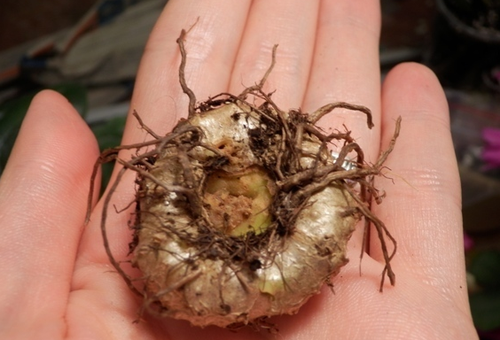
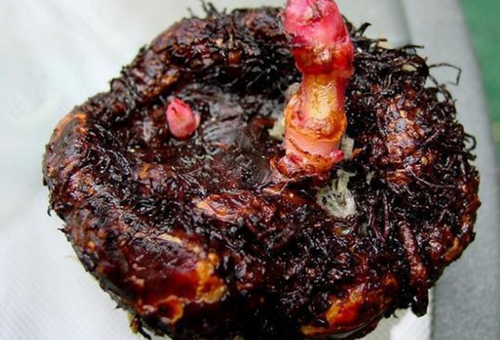
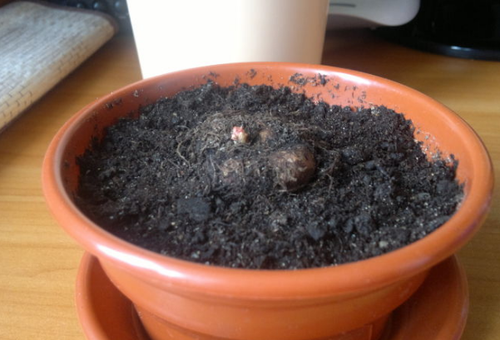


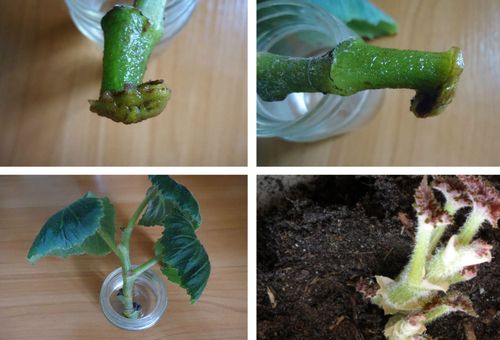
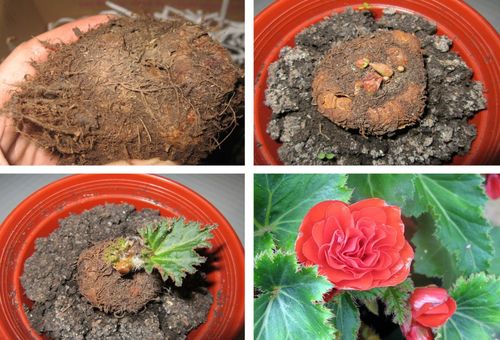
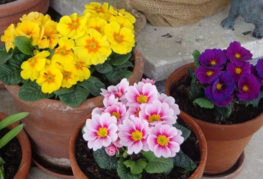

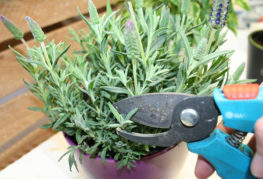
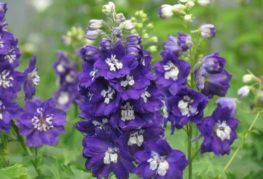
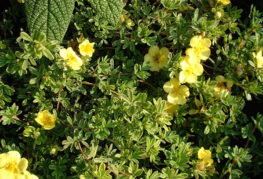
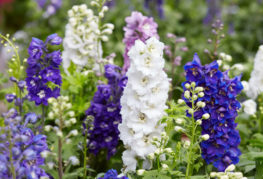
and will be published shortly.